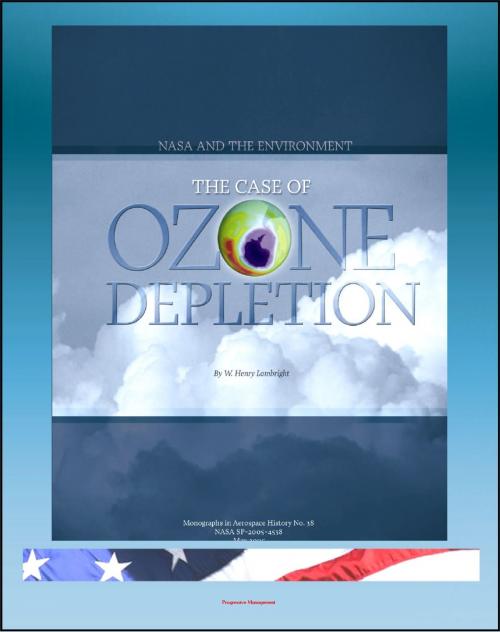NASA and the Environment: The Case of Ozone Depletion (NASA SP-2005-4538)
Nonfiction, Science & Nature, Science, Physics, Astrophysics & Space Science, Earth Sciences| Author: | Progressive Management | ISBN: | 9781465810557 |
| Publisher: | Progressive Management | Publication: | February 2, 2012 |
| Imprint: | Smashwords Edition | Language: | English |
| Author: | Progressive Management |
| ISBN: | 9781465810557 |
| Publisher: | Progressive Management |
| Publication: | February 2, 2012 |
| Imprint: | Smashwords Edition |
| Language: | English |
This official NASA history document - converted for accurate flowing-text e-book format reproduction - provides a thorough overview of NASA's role in researching the problem of ozone depletion, including the discovery of the ozone hole.
The introduction states: " While the National Aeronautics and Space Administration (NASA) is widely perceived as a space agency, since its inception NASA has had a mission dedicated to the home planet. Initially, this mission involved using space to better observe and predict weather and to enable worldwide communication. Meteorological and communication satellites showed the value of space for earthly endeavors in the 1960s. In 1972, NASA launched Landsat, and the era of earth-resource monitoring began. At the same time, in the late 1960s and early 1970s, the environmental movement swept throughout the United Sates and most industrialized countries. The first Earth Day event took place in 1970, and the government generally began to pay much more attention to issues of environmental quality. Mitigating pollution became an overriding objective for many agencies. NASA's existing mission to observe planet Earth was augmented in these years and directed more toward environmental quality. In the 1980s, NASA sought to plan and establish a new environmental effort that eventuated in the 1990s with the Earth Observing System (EOS). The Agency was able to make its initial mark via atmospheric monitoring, specifically ozone depletion. An important policy stimulus in many respects, ozone depletion spawned the Montreal Protocol of 1987 (the most significant international environmental treaty then in existence). It also was an issue critical to NASA's history that served as a bridge linking NASA's weather and land-resource satellites to NASA's concern for the global changes affecting the home planet. Significantly, as a global environmental problem, ozone depletion underscored the importance of NASA's ability to observe Earth from space. Moreover, the NASA management team's ability to apply large-scale research efforts and mobilize the talents of other agencies and the private sector illuminated its role as a "lead" agency capable of crossing organizational boundaries as well as the science-policy divide."
This official NASA history document - converted for accurate flowing-text e-book format reproduction - provides a thorough overview of NASA's role in researching the problem of ozone depletion, including the discovery of the ozone hole.
The introduction states: " While the National Aeronautics and Space Administration (NASA) is widely perceived as a space agency, since its inception NASA has had a mission dedicated to the home planet. Initially, this mission involved using space to better observe and predict weather and to enable worldwide communication. Meteorological and communication satellites showed the value of space for earthly endeavors in the 1960s. In 1972, NASA launched Landsat, and the era of earth-resource monitoring began. At the same time, in the late 1960s and early 1970s, the environmental movement swept throughout the United Sates and most industrialized countries. The first Earth Day event took place in 1970, and the government generally began to pay much more attention to issues of environmental quality. Mitigating pollution became an overriding objective for many agencies. NASA's existing mission to observe planet Earth was augmented in these years and directed more toward environmental quality. In the 1980s, NASA sought to plan and establish a new environmental effort that eventuated in the 1990s with the Earth Observing System (EOS). The Agency was able to make its initial mark via atmospheric monitoring, specifically ozone depletion. An important policy stimulus in many respects, ozone depletion spawned the Montreal Protocol of 1987 (the most significant international environmental treaty then in existence). It also was an issue critical to NASA's history that served as a bridge linking NASA's weather and land-resource satellites to NASA's concern for the global changes affecting the home planet. Significantly, as a global environmental problem, ozone depletion underscored the importance of NASA's ability to observe Earth from space. Moreover, the NASA management team's ability to apply large-scale research efforts and mobilize the talents of other agencies and the private sector illuminated its role as a "lead" agency capable of crossing organizational boundaries as well as the science-policy divide."















